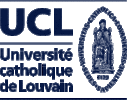Quantitative Economics Master - QEM:
Econometrics
Number of Credits: 7 credits
Hours: 30 hours of Lectures, 30 hours of Tutorials including exam, and 20 hours of flipped Classrooms with tutor support.
General Presentation: The aim of the first year master course is to cover a large spectrum of econometric techniques, albeit in a superficial way, in order to allow the students to read and roughly understand most applied economic papers as soon as possible.
A. Linear Models
1. Asymptotic tests of linear and nonlinear hypotheses. Heteroskedasticity and Generalized Least Squares (GLS). Endogeneous regressors and Two Stage Least Squares (2SLS). Simultaneous equations. Linear panel data models (if possible)
B. Nonlinear models
1. Classical examples of nonlinear models: Binary choice model. Multinomial choice. Count data. Censored regression. Selection model
2. Generalizing the Maximum Likelihood principle: M-estimation (one-step, two-step estimators, example: nonlinear least squares, hypothesis testing). Generalized Method of Moments (GMM)
Books: WOOLDRIDGE, Jeffrey, Introductory Econometrics: A modern Approach, South-Western College Pub; 2 edition.
WOOLDRIDGE, Jeffrey, Econometric Analysis of Cross Section and Panel Data, The MIT Press; 1st edition (2001).
GREENE, William H., Econometric Analysis, Prentice Hall, 2000.
Prerequisites: Statistics





